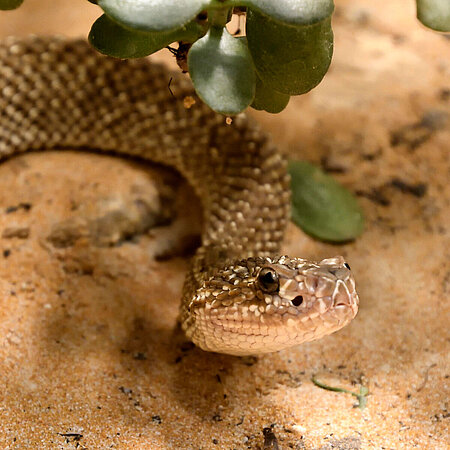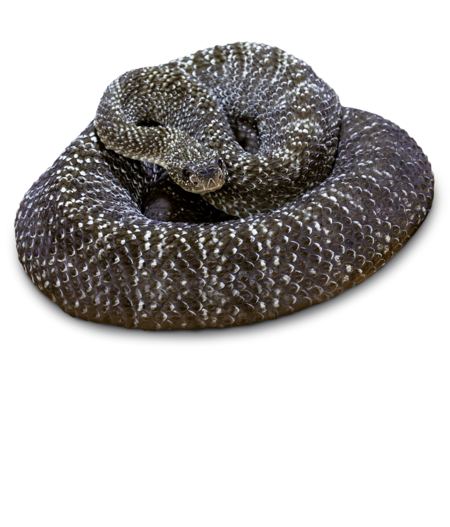Uracoan rattlesnake
Crotalus vegrandis

- Family
- Pit vipers (Crotalinae)
- Habitat
- open, sparsely-wooded grasslands
Distinctive rattle
The most recognisable feature of the rattlesnake is the rattle, which is used to warn off predators. It consists of segments of hardened shed skin that are added to the tip of the tail each time the snake moults. Newborns do not have rattles, which begin to grow with the first moult. The end segments of the rattle often break off. The snakes age can therefore not be determined by counting the segments.
Solitary life
Uracoan rattlesnakes are solitary animals that only get together during the mating season. Females are noticeably smaller and lighter than their male counterparts. The native populations do not brumate (reptile equivalent of hibernate) in winter as they live in a tropical climate. Uracoan rattlesnakes have a lifespan of 15 to 20 years.

Snakes have no external ears and are deaf to airborne sounds. They pick up vibrations in the ground instead.
Distribution
